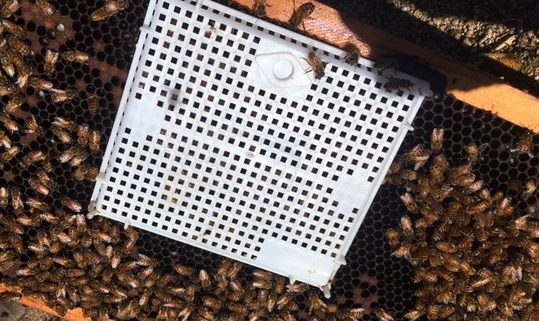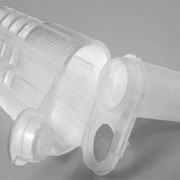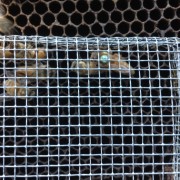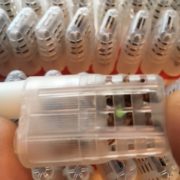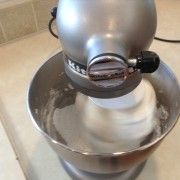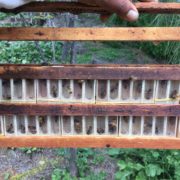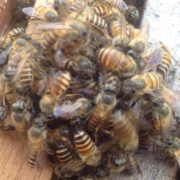The Push-In Queen Cage
Most beekeepers are familiar with the most commonly used standard queen honey bee cages, such as the three-hole wooden cage, the California Mini Cage, and the JZ-BZ plastic queen cage (the latter two of which are used here at Wildflower Meadows). However, a less frequently used queen cage is called the push-in cage. The difference between a push-in queen cage and a standard queen cage is that unlike a standard cage, a push-in cage allows the queen to begin to lay eggs while she is still in the cage, before she is released. The more commonly used cages do not.
All of the more commonly used queen cages follow the same principle of confining the queen in a safe container while the bees in the colony become accustomed to her pheromone. During this introduction period, the bees in the colony work their way through a candy tube of sugar, which delays the release of the queen by anywhere from one to three days, depending on the strength of the colony.
The riskiest part of this process, and the part of the process where the new queen can be lost, occurs just when the queen is released from hew cage. At the point of release, although the queen may be generally accepted by the colony, she is still somewhat vulnerable because she has not yet laid any eggs. Most honeybee colonies are generally suspicious of a new queen that is not laying any eggs, regardless of how excellent she may otherwise be. (This is why best beekeeping practices advise not to disturb a colony during this sensitive period of queen introduction. The combination of the disturbance added to the fact that a new queen might not yet be laying eggs, can cause a colony to turn on the new queen and possibly kill her.)
One of the ways around this problem is to utilize a push-in cage. A push-in cage provides the new queen adequate protection during her introduction, while at the same time allowing her to start laying eggs in a safe, but restricted area of the colony.
To introduce a new queen using a push-in cage, the beekeeper must look for a section of comb that contains some open cells for the new queen to lay in, along with some emerging brood, and ideally, some nectar or honey. The push-in cage is placed over this section, and the new queen is placed inside the cage, along with around three to six young attendant bees. (The benefit of placing the push-in cage over emerging brood is that the new baby bees that hatch under the cage will provide additional support for the new queen. And, of course, the baby bees will accept the new queen, since they know no other.)
Once the new queen begins laying eggs under the push-in cage – usually within one to three days – she is free to be released. At this point, the colony has not only become accustomed to the queen’s pheromone, but the bees also recognize the queen as an actual laying queen who is already performing. We like to say that the queen is “gold” at that point.
Although using a push-in queen cage takes a bit of effort, it is a very safe and reliable method of queen introduction. It is why here at Wildflower Meadows, we always introduce our precious and champion breeder queens in this manner. It is the tried and true safest way.
It’s easy to construct a push in cage of your own using standard hardware cloth. Or, alternatively, many beekeeping supply companies, such as Mann Lake Ltd., sell ready-made push in queen cages.

